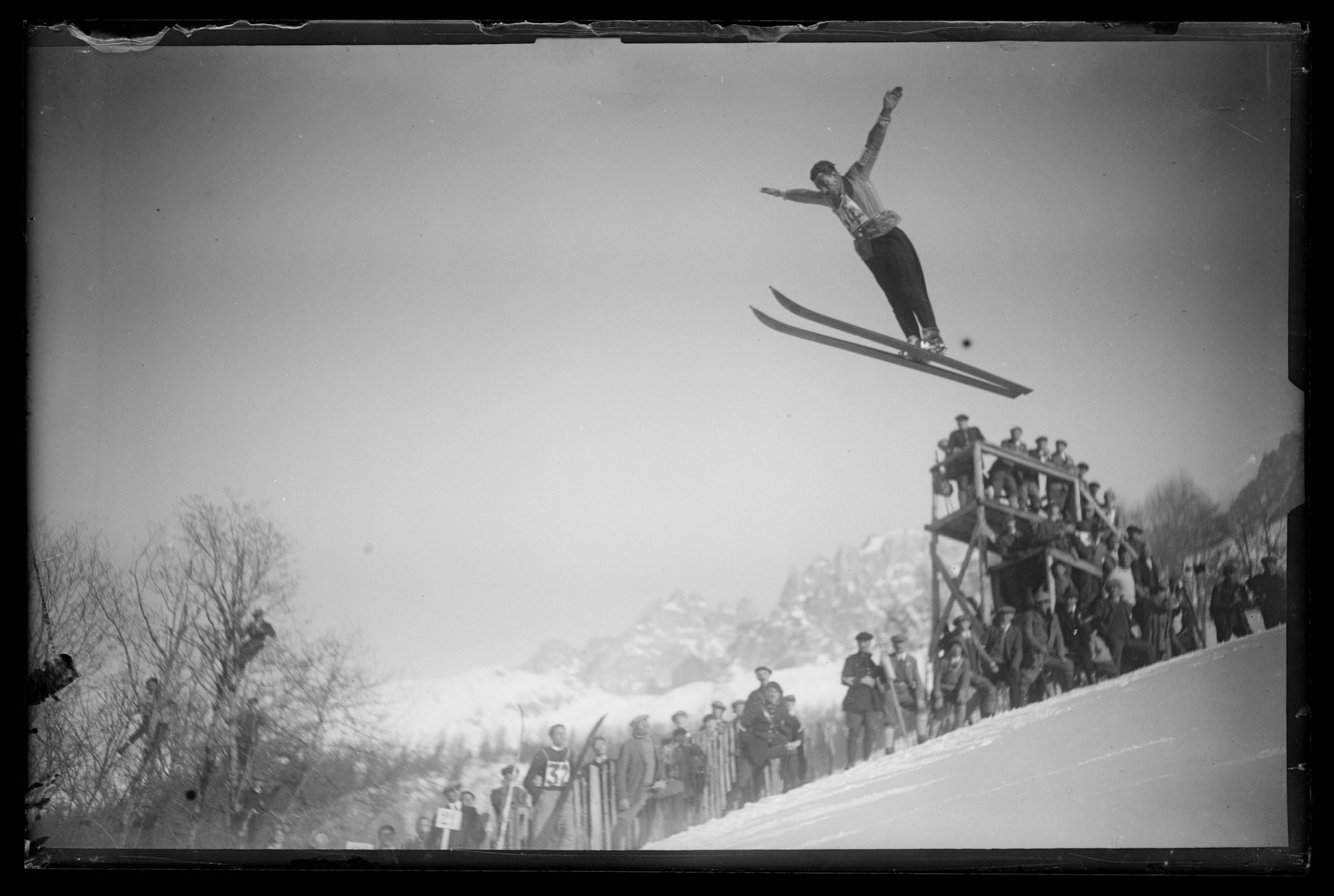When the Games commenced | Chamonix’s centenary celebrations


Patrick Thorne on how Chamonix is celebrating the Winter Olympics centenary
January 25, 1924. It was bitterly cold in Chamonix. Olympic athletes, carrying their own equipment, paraded across town, stopping in front of the ice rink, where the Opening Ceremony was to take place. There, Gaston Vidal, Under-secretary of State, formally declared the “Chamonix International Week of Sports officially open”. History was made.
All eyes are on Chamonix this winter as it celebrates the Winter Olympics centenary.
Originally known as the ‘International Winter Sports Week’, the event attracted 294 competitors from 16 nations, with Britain remarkably having the most (with 44 athletes, they had one more competitor than the French hosts). More than 10,000 people flocked to Chamonix to see the Games, and they were such a success that the International Olympic Committee retrospectively christened it ‘the first Olympic Winter Games’.
The athletes competed in 17 competitions, and although the first international Alpine ski races had already been organised by Brit Arnold Lunn in the early ’20s, none involved downhill skiing. Instead, cross-country skiing, ski jumping, ice skating, curling and bobsleigh medals were up for grabs, along with an early version of biathlon known as ‘military patrol’.
The first Olympic Downhills were not staged until the Garmisch Games in 1936. The exclusion of Alpine skiing was put down to objections from Scandinavian nations, which were dominant in the Nordic disciplines, but not so much in Downhill. The decision was reflected in the medal table, with over half the 49 medals awarded going to Norway (17) and Finland (11).
One feature of the first Olympics was that every competitor received a medal for taking part. Another was that 18 golds were awarded: one more than the number of competitions. The Olympic Committee decided to award an additional medal to the greatest mountaineering performance of the previous four years, deemed to be the British expedition to Everest in 1922.
The 1924 Games also saw countries coming together to establish the International Ski Federation (FIS), which oversaw some of the early Alpine ski races, the first World Championships in Mürren in 1931 (back to Chamonix by 1937), and later the establishment of the World Cup circuit. This year’s Mens’ World Cup Kandahar in Chamonix from 2-4 February coincides with that anniversary.
In the decades since, the Winter Olympics have grown exponentially – the 2022 Beijing Winter Games had a record 109 events across 15 disciplines, attracting 2,871 athletes from 91 nations, including first appearances for Haiti and Saudi Arabia.
Chamonix has a number of centenary events taking place, including anniversary parades (the next is scheduled for 16 March). Running through the season, there are two exhibitions to visit. ‘The Invention of the Olympic Winter Games’ is at the Maison de la Mémoire et du Patrimoine in the centre of Chamonix, while ‘Champions at the Olympic Games’ is in the Maison de Village in Argentière. An official 1924 Olympic Games anniversary book has also been published, Chamonix 1924: the first Olympic Winter Games (available in English).
The 1924 Winter Olympics centenary celebrations are due to reach their climax in Chamonix in early summer when, in a neat full circle, the torch relay for the 2024 Olympics passes through the ski town on 23 June en route to Paris.
Not a lot remains of the original venues of the 1924 Games. You can still see the base building of the original Aiguille du Midi lift, which was used to lift bobsleighs to the top of the run. Parts of the remains of that track – at the time, the most sophisticated in the world – are still there in the woods above, but it was abandoned not many years after the Games, and its structure was later cut in half by the construction of the Mont Blanc Tunnel.
The original ice stadiums have also gone and been replaced by modern facilities, where you can still test your skills in skating or curling close to where the Olympians did, or watch an ice hockey match on what was the 1924 Olympic Park.
The main survivor from 1924 is the Mont aux Bossons ski jumping ramp. It is still intact thanks to the efforts of the local jumping club, even though there’s now a modern all-weather ramp in the centre of Chamonix. In fact, the local club is currently trying to raise funds to both preserve the Bossons jump and upgrade it to make it more frequently usable again. The ramp was designed to see maximum jumps of 60m, but a record of 110m was achieved at the French Championships in 2007 after renovations allowed for longer jumps.
Chamonix’s visitors can also stay or dine in one of the resort’s three hotels that were key locations back in 1924. The Hotel Mont Blanc and the Hameau Albert Premier each played an important role in hosting the first Winter Olympics, and the once-derelict but now beautifully restored Grand Hotel des Alpes is significant, as Jean Lavaivre, mayor of Chamonix in 1924 and a major driving force behind the Games being awarded to the town, owned the hotel at the time of the Games.
* For more information visit chamonix.com